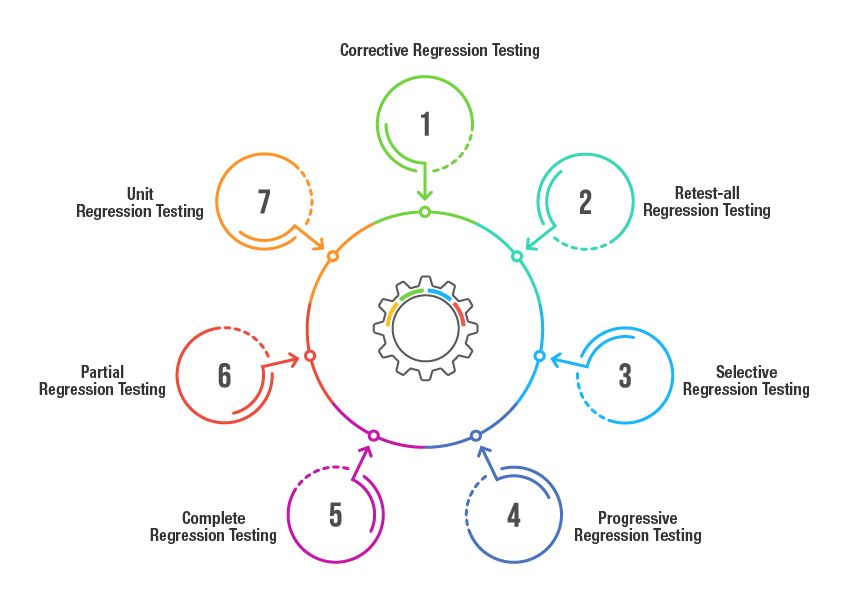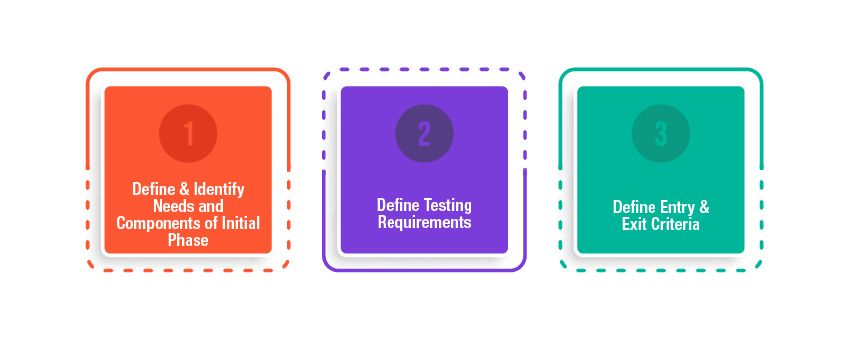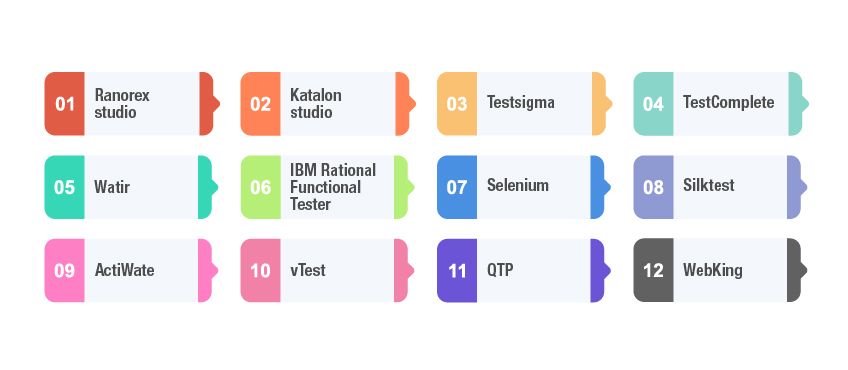Published: 25 Feb 2020
What is Regression Testing? – Tools, Types and Techniques
Last Updated: 18 Mar 2024
Contents
1. What is Regression Testing?
2. When Should Regression Testing Be Taken Up?
3. When to do Regression Testing?
4. What are Types of Regression Testing?
5. What is Regression Testing in Agile?
6. What should be a Regression Testing Strategy?
7. How to achieve effective Regression Testing?
8. What are the Important Tools for Regression Testing?
9. Conclusion
What is Regression Testing?
According to Wikipedia, Regression testing is an important type of software testing that revolves around re-running functional and non-functional tests. These tests are conducted to ensure and check the previously developed and tested software still perform well even after a change is made in the software. Primarily, it checks whether the previous functionality of an application is working as intended even with a new feature added. It checks for any new bug or error in the existing software and is a verification process that takes place in the software.
Whenever the new software is released, there is an essential need to test the new functionality. There is a necessity to re-run the old tests to ensure that new software does not re-introduce any old defects or create new ones that might affect the existing functionality. Though software regression testing seems to be a simple concept, it is quite challenging as it tests the functionality of the added features. This verification process effectively holds immense importance, especially when there are continuous changes or improvements that are made in the application.
Software regression testing should be performed and taken up as soon as the programmer adds new functionality to an application. This is because of the dependency between the newly added and previous functionality that is critical for the software to function according to the requirements defined.
When Should Regression Testing Be Taken Up?
Whenever a new feature is developed, when an existing feature is improved or if any UI updates are made, ideally, there is a need to perform software regression and functional testing. It will ensure that the changes do not impact the software’s existing functionality.
In addition, the verification method should be performed whether there is a small or significant change in an application that might affect any change to its old functionality.
Functional regression testing teams must verify that the new code does not conflict with older code, and also confirms that the code that has not been changed is still working as expected. Therefore, this type of visual regression testing ensures that the previous functionality of the application works effectively and new changes have not introduced any new bugs within the application.
Therefore, it is an essential element of software quality assurance. Along with unit and integration testing, it identifies defects early and helps to reduce the cost of resolving and fixing issues early. The process also creates confidence that an application is ready for deployment.
Thus, importantly, this process verifies that code changes do not re-introduce old defects and help improve software quality. Businesses should adopt this service to ensure and deliver high-quality software.
When to do Regression Testing?
It should be taken up when:
– New functionality comes in:
Whenever the developers introduce new code, they don’t fully concentrate on its compatibility with the existing code and hence the software regression testing should be taken up to find any possible issues within software.
– Changes in Existing functionality:
Sometimes within the agile software development process, developers revise the existing functionality and exclude/edit some features based on the requirements. In such cases, the regression and functionality testing process checks whether the new changes have caused any damage to the rest of the functionality.
– New Integrations take place with other products:
At times of integration, regression testing assures that the software product performs flawlessly even after integration with another product.
What are Types of Regression Testing?
Various types of regression testing can be taken up to ensure existing functionality is not affected by the recent changes in the application.

Interestingly, within the software development process, there are many types of software tests that are taken up along with regression testing to achieve quality software. There are some specific differences between functional, regression, and smoke testing types that should be known before enforcing them.
Regression vs Smoke Testing
Typically, smoke testing is used to check whether the software build is stable as first thing and if it can be used by the quality assurance team for further tests while regression testing is useful to check for any small changes in the code and ensures old functionalities are not affected by these new changes.
What is Regression Testing in Agile?
In an agile environment, software testing needs to be taken up with each sprint and the quality assurance testers should make sure that new changes do not affect the existing functionality of the application.
Moreover, in agile scenarios with iterative changes, there are more frequent build cycles and continuous changes are added to the application. This sort of frequent change makes software regression testing mandatory in agile.
Thus, for successful regression tests in agile, the team should follow an effective strategy and suit from the onset of software product development.
The QA teams should continue developing the test scripts alongside each development sprint to ensure effective results.
What should be a Regression Testing Strategy?

Define and Identify Needs and Components of Initial Phase:
It is the first and most crucial step to start this process, wherein regression tests should ideally be initiated as soon as changes occur within the software.
The main motive is to test the existing code or functionality with the help of regression test scripts. Therefore, careful planning should be taken up to identify the needs and components of regression testing.
Define Testing Requirements:
This is the second phase wherein defining of the right test cases for a project should be taken up. This phase is achieved with an effective collaborative approach established between stakeholders, developers, and software test engineers. Therefore, a common consensus is required to decide upon the test cases that need to be prepared which could be reused each time there is a change in the application.
Define Entry & Exit Criteria:
There is an effective need to define the entry and exit points such that the test objectives are in sync with the project requirements. Before beginning the process, the entry and exit criteria should be identified to smoothen the process of the regression test.
How to achieve effective Regression Testing?
It can be achieved by adopting either manual or automated regression testing.
What is Manual Regression testing?
When regression testing is performed by manual testers, then test cases are initially drafted and they will be executed. These tests help to check whether it is a pass or fail based on the expected results mentioned in the test cases. No separate tools are used to perform this testing process.
What is Automated Regression Testing?
When it comes to automated regression testing, various types of test automation tools are used to initiate the process. It is evident that manual process takes a lot of time, and to save time, an automated approach is taken up.
Typically, this testing type includes various steps, such as deciding on what test cases to automate, whether to test early or test often, along with some importance placed on the test automation tool to be selected. Quality test cases should be developed, and the creation of effective test data is very important for the success of test automation. There are various tools available, and based on the application under test, they should be selected by businesses.
What are the Important Regression Testing Tools?

Conclusion:
Thus, Regression testing is a reliable way to ensure that the application remains defect-free even after frequent changes. It also ensures that the recent changes have not broken any existing functionality. This process should be performed to find bugs in a new software release and ensures the previous bugs are fixed. It should be implemented with any new change in features, and these should be verified with an effective regression test automation strategy and can be tested either manually or by using an automated regression testing framework and tools.
How TestingXperts(Tx) can help?
Tx delivers a spectrum of Regression testing services such as:
– Software Regression Testing
– Integration Testing System Integration Testing Regression
– Functional Regression Testing
– Automated Regression Testing
– End-to-End Regression Testing
Leverage our next-gen software regression testing services to ensure quality software that delivers great user experience.